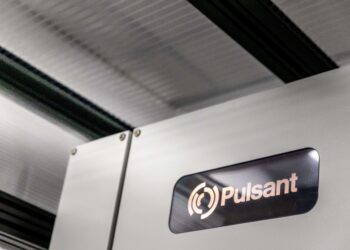Chandra Thirumella, UK Technical Expert in Digital Infrastructure at Hitachi Vantara, sits down with IT Channel Oxygen to explain the partner and customer benefits of software-defined storage.
Your colleagues Jason [Beckett] and Garry [Hodgkinson] have already mentioned the launch of Hitachi Vantara’s Virtual Storage Platform One. Can you dig into what benefits software-defined storage (SDS) offers?
From a customer value proposition point of view, there is a better ROI and no vendor lock-in, which aligns with our sustainability value-add. The software runs on vendor agnostic infrastructure both on premises and in the cloud which means the customer isn’t unnecessarily forced to replace arrays and can continue with their existing infrastructure.
Then there’s optimised IT productivity. By extending Virtual Storage Platform One’s enterprise-grade data services to software-defined architecture, enterprise IT staff gain greater flexibility, agility, productivity and cost savings. This allows them to provision, monitor, manage, and migrate applications from appliances to the cloud, without compromising on scalability, performance, and availability.
Another benefit is enhanced business continuity and security. Customers can leverage Hitachi Vantara’s renowned reliability to optimize storage resources cost-effectively. Additionally, Hitachi Polyphase Erasure Coding (HPEC), our proprietary data protection technology, provides robust data access, protection, and migration. It features data-addressed encryption across hybrid cloud platforms, ensuring secure management of data.
Scalability and flexibility are significant benefits as well. Businesses can quickly adapt to new workloads, application requirements, and market changes, improving overall agility.
Finally, future-proofing is a key consideration. As technology evolves, SDS can integrate new storage technologies and innovations without requiring a complete overhaul of the storage infrastructure, which is great for the environment and great for the wallet.
Why should partners be interested in selling software-defined storage?
Ease of use, flexibility, and investment protection that comes with SDS is a very appealing proposition for partners.
Then there’s market demand. The demand for flexibility, scalability, cost-effective storage solutions is growing, and SDS is positioned to meet these needs across various industries.
Customer retention is another key benefit. Providing advanced and adaptable storage solutions helps partners retain customers by addressing their evolving storage needs more effectively than traditional storage systems.
My advice would be to stop selling models and focus on how the platform solves customer problems. Rather than discussing enterprise storage arrays, mid-range arrays, or file-based and software-defined products, highlight that we offer one unified data platform, Virtual Storage Platform One, that can address customer challenges, either in the cloud or on-premises.
The vendor independence of software-defined storage allows partners to offer solutions not tied to specific hardware vendors, giving them more freedom to choose the best components for their customers.
How can SDS minimise rip and replace and facilitate hardware reuse?
SDS minimises rip-and-replace by abstracting storage software from hardware, allowing for scalable and flexible infrastructure upgrades, enhancing hardware lifecycle management, providing cost efficiencies and simplifying storage management through centralisation and automation.
By leveraging these capabilities, businesses can maximise the return on their existing hardware investments, avoid costly overhaul, and maintain a more agile and efficient storage infrastructure.
Can you give us some examples of SDS sustainability use cases you’re seeing in the UK and elsewhere?
One use case would be prolonging hardware lifespan and maximising resource utilisation to reduce the need for new equipment. For example, extending the use of existing equipment or mixed hardware environments.
There’s also minimising e-waste through the reuse and repurpose of existing hardware. Improving energy efficiency by optimising storage management and operations is also significant.
Reducing physical and carbon footprints through better resource consolidation and virtualisation is another use case. These things can significantly enhance the sustainability benefits that software-defined storage offers.
And now let’s move to storage virtualisation. How does it help companies reach their wider carbon goals, and again, how does it reduce kit waste?
Storage virtualisation abstracts physical storage resources into a single consolidated virtual storage pool.
This process hides the complexity of the underlying storage infrastructure from users and applications, making it easier to manage, allocate, and utilise storage resources.
Some of the benefits are that it creates an abstraction layer between physical storage devices and applications for users accessing them. This layer can present multiple physical storage devices as a single logical unit. When you used to go into data centers, you were likely to see rows upon rows of arrays, but now it’s becoming a very different story. So, there are many sustainability benefits, including reducing floor space, power cooling, and electricity bills in the facilities, as well as other carbon emissions associated with the supply chain lifecycle of a storage system.
Virtualisation also has unified management, which means it provides a centralised management interface for different storage devices – regardless of their make or model –simplifying administration and reducing management overhead.
Dynamic allocation is another benefit – it allows for the adjustment of storage resources based on current needs, optimising storage utilisation and improving efficiency.
Scalability is yet another advantage – it facilitates seamless scaling of storage capacity by adding new storage devices without disrupting existing applications or services. Through this optimization of data placement, and through the balancing of loads across multiple storage devices, storage virtualisation can enhance overall performance.
How does Hitachi Vantara do things differently to the other large hardware vendors?
Let’s break this down and focus on some of our key differentiators –
Investment Protection: Hitachi Vantara leads with a software-first innovation approach that helps reduce hardware costs. In terms of sustainability, the company has been certified under the EPA’s ENERGY STAR program, is the only storage solutions provider certified by Carbon Footprint for Products in Japan, and has recently been awarded a Gold Rating for sustainability by EcoVadis.
Performance Enhancements: Hitachi Vantara offers significant performance improvementsalong with enhanced scalability and capacity without compromising data integrity or availability. Our solutions leverage high-performance computing (HPEC) and incorporate reliability, availability, and serviceability capabilities.
Seamless Visibility: The company provides an exceptional user experience through a common portal for a unified view across block, file, and object storage.
100% Data Availability Guarantee: We offer comprehensive guarantees across block, file, and object storage, ensuring 100% data availability, investment protection, and cost efficiency while enhancing performance with smart data reduction and avoiding data migrations.
Cyber Attack Recovery: Hitachi Vantara can get you back up and running after an hour following a cyber attack
Virtual Storage Platform One Experience: Virtual Storage Platform One offers a unified OS and management interface across solutions, including software-defined options. This integration reduces training costs and improves productivity.
This article was produced in association with Hitachi Vantara and is classified as partner content. What is partner content? See more here.















